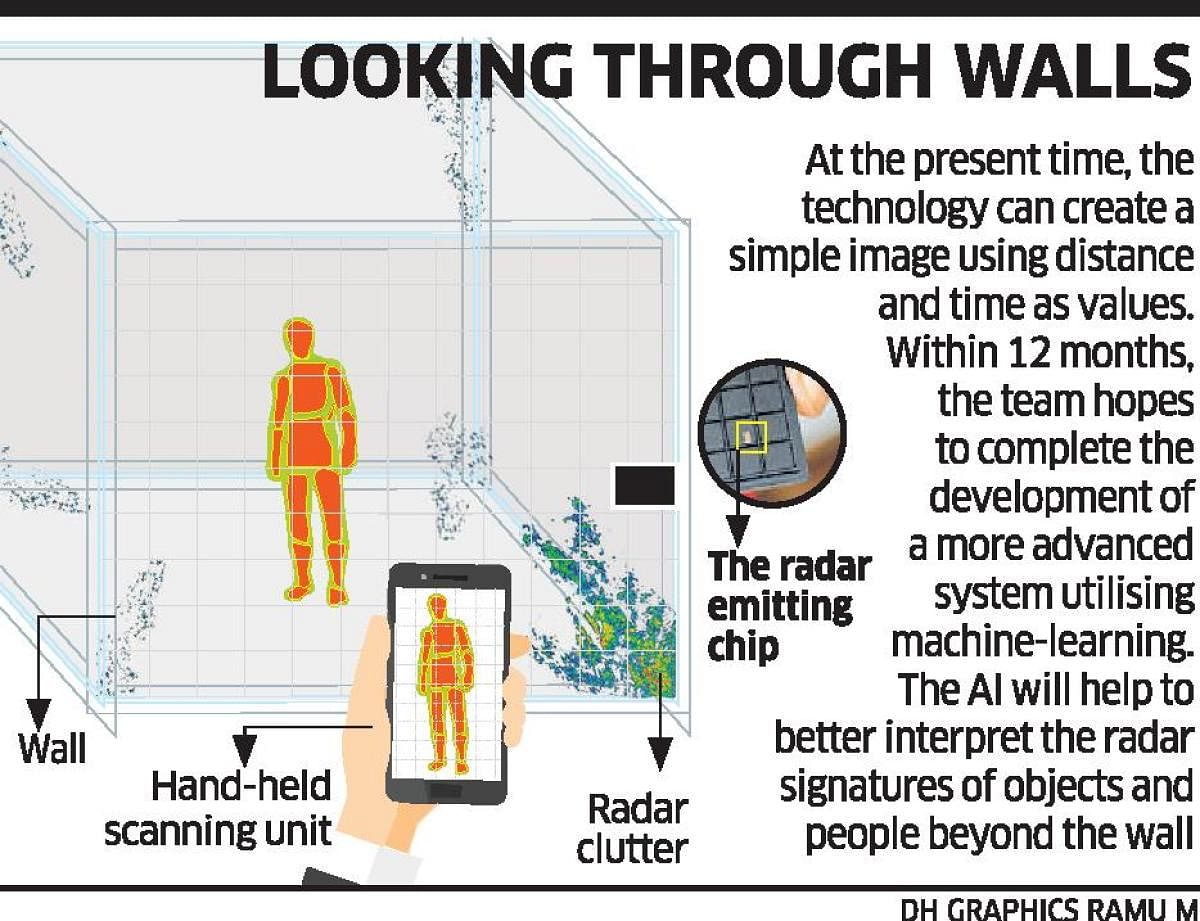

Imagine a type of hand-held radar unit that would allow you to see through walls or automatically scan a person entering an airport terminal for concealed, non-metal weapons.
This is the basis of a new radar-emitting chip measuring smaller than a grain of rice, developed by researchers working at the Indian Institute of Science (IISc).
Most people consider radar in terms of detecting objects. Signals are bounced off an object and the time it takes for the signal to return to the receiver is used to calculate the distance and speed of the object. But radio waves can also penetrate walls. The extension of this principle enables ‘Through-the-Wall Radar’ (TWR), explained Associate Professor Gaurab Banerjee of IISc’s Electrical Communications Engineering Department, who with a team of six students, is the brainchild behind the breakthrough.
Funded by the Central government, the project was conceived as an airport-security device, where it would complement existing X-ray systems.
“Currently, body scans are being carried out through X-rays, but radar technology does not need to have people having to step through portals to be scanned. A person can be automatically scanned the moment he or she enters the terminal. With the aid of machine-learning, the technology can detect non-metal weaponry, such as 3D printed guns,” said Dr Banerjee.
“The problem with X-ray-based screening is harmful ionisation radiation. There are no such health concerns with radar technology,” he added.
The Bharat Electronics Limited (BEL), whose staple involves radar development, serves as the project’s industrial partner. The company, which offers detailed technical inputs on the design of the chip, said the new device has invaluable military-grade applications.
“The chip could be used by the military to create a layout of a terrorist-held building, for example. The technology could be used to determine the topography of rooms within the building, and the movements of suspected insurgents within, in real-time,” an officer said.
The integrated chipset, which is smaller than a one rupee coin, comprises a single transmitter, three receivers, and an advanced frequency synthesiser capable of generating complex radar signals. Using many signals being sent out, received and analysed, the chip creates a “splotch” image of objects and people behind a wall.
“The next 12 months will focus on maturing and commercialising the technology,” Dr Banerjee said.
Breakthrough technology
1. The beneficiary of Rs 4 cr of funding by the central Government’s IMPRINT programme, which supports translatable science in an effort to generate technology which can be commercialized, the DRDO and the Ministry of Human Resource Development (MHRD), the project is said to be on the way to completion in the next 12-18 months.
2. The system took five years to build because of the challenges posed by TWR technology. To overcome signal damping while passing through walls, radio waves consisting of a large number of frequencies were used, which complicated the design. These radars also use a more complex signal, known as a “chirp,” which requires customized electronics such as a microwave transmitter, a receiver and a frequency synthesizer.
3. A similar radar-imaging chip was developed by the Israeli company Vayyar, which has about 10-years head-start in the technology. Their system uses a chip which covers imaging and radar bands from 3 GHz to 81 GHz with 72 transmitters and 72 receivers.